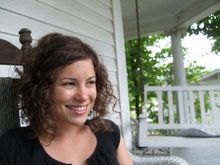This machine is great because one of the biggest criticisms of biochar is that the process releases carbon into the atmosphere so it's not as Earth-friendly as it's portrayed. But this technology is a solution to that problem; and while this immense and complicated-looking machine seems a little impractical for widespread use, scientists have already developed more compact models. In China there is a model of this machine that's a cookstove meant for use in the home!
This little guy not only cooks your food, but helps you grow it too- assuming you use the charcoal it produces in your garden soil. It was developed by Robert Flanagan, an Irish scientist who does most of his work in Australia. He's at the forefront of the biochar phenomenon.
As an editorial comment, this reporter thinks that's pretty cool.

